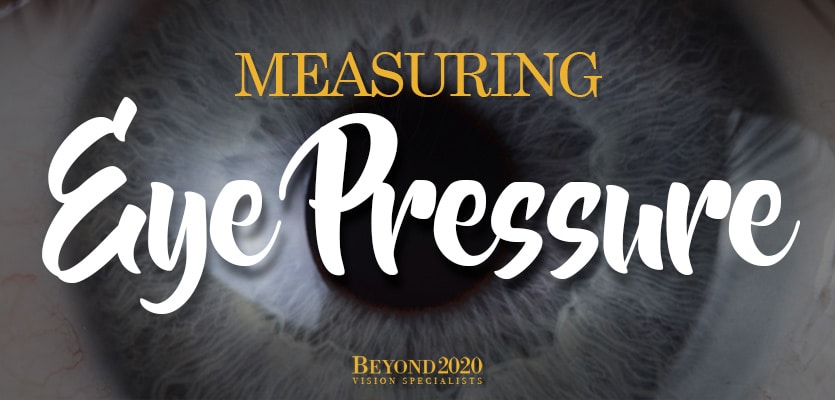How is Eye Pressure Measured?
Home » How is Eye Pressure Measured?

How do you measure eye pressure?
Tonometers are the instruments of choice for determining an individual’s eye pressure, which is also referred to as intraocular pressure (IOP). The non-contact tonometer is by far the most popular variety of tonometer. This tonometer makes use of a puff of air to gently press on the surface of the eye in order to measure its resistance, and consequently, the ocular pressure. Another way is the Goldmann Applanation tonometer, which utilizes a small, flat disk to softly touch the surface of the eye in order to measure the force required to flatten a small portion of the cornea. This method is similar to the first method described above.
In addition, there has been a relatively recent development of a new approach known as the “Ocular Reaction Analyzer.” This method evaluates the biomechanical response of the eye and is thought to be more accurate than the methods that have come before it.
What is the average pressure in the eyes?
Intraocular pressure, often known as IOP, is typically thought of as having a normal range that falls somewhere between 10 and 21 millimeters of mercury (mm Hg). Having said that, it is essential to keep in mind that the optimal IOP varies from person to person and even shifts within the course of a single day. People who have a history of glaucoma in their family or who have specific medical disorders or risk factors, such as glaucoma, may have a lower “normal” range for their intraocular pressure (IOP). It is critical to have routine eye exams so that your intraocular pressure (IOP) may be measured and so that any changes or abnormalities can be identified. Your eye doctor will be able to evaluate your vision and let you know what is considered normal for your eyes as well as whether or not any treatment is required.
How exactly do you determine whether or not the pressure in your eye is too high?
There are no indications or symptoms that can indicate that the pressure in your eye is excessive if you have high intraocular pressure (IOP), which is a disease that is known as symptomless hypertension of the eye. Your intraocular pressure (IOP) will need to be measured with a tonometer in order to discover it, as this is the only way it can be found. However, if the condition is not treated, excessive IOP can cause damage to the optic nerve, which can result in a loss of eyesight. Because of this, it is essential to go in for routine eye exams, particularly if you have a history of glaucoma in your family or are at risk for developing the illness yourself.
If you have glaucoma, your eye doctor may also examine for changes in your visual field. These changes can suggest damage to the optic nerve or changes in the appearance of the optic nerve itself. If you have glaucoma, your eye doctor may also check for these changes. These are indications that your current treatment strategy could require some modifications.
A sudden severe headache, eye pain, nausea and vomiting, visual changes, halos around lights, redness in the eye, blurred vision, and sensitivity to light are all symptoms that can indicate acute angle-closure glaucoma, which is a medical emergency and you should seek immediate medical attention. It is also important to note that these symptoms can also indicate visual changes, halos around lights, redness in the eye, and sensitivity to light.
How can I reduce the pressure in my eyes?
There are a few different approaches that can be taken to bring down the intraocular pressure (IOP) in the eyes, including the following:
- Medications: Eye drops containing medications such as prostaglandin analogs, beta blockers, alpha-adrenergic agonists, and carbonic anhydrase inhibitors can help reduce intraocular pressure (IOP) by either decreasing the amount of fluid that is produced in the eye or increasing the amount of fluid that drains from the eye.
- Laser therapy: a surgery called trabeculoplasty, which uses a laser to open up drainage channels in the eye, can be performed to assist reduce intraocular pressure (IOP).
- Surgery In order to reduce intraocular pressure (IOP), a surgical technique known as a trabeculectomy may be performed. This treatment creates a new drainage channel in the eye.
- Adjustments in lifestyle Certain changes in lifestyle, like maintaining a healthy weight, exercising regularly, eating a nutritious diet, and refraining from smoking, can assist to lower intraocular pressure (IOP).
It is important to keep in mind that these therapies might not be suited for everyone. Your eye doctor will be able to advise you on the treatment that is most fit for your situation, taking into account your specific requirements and medical history.
In the event that your eye doctor prescribes medication for you, it is imperative that you take the medication exactly as directed and that you keep any follow-up appointments as scheduled. This will allow your eye doctor to monitor your eye pressure and determine whether or not the treatment is successful.
About Beyond 2020 Vision Specialists
Beyond 2020 Vision Specialists provide comprehensive eye exams, contact lens fittings, and the treatment of eye diseases. They also carry a wide selection of eyeglasses and sunglasses. They use state-of-the-art technology to ensure that their patients receive the best possible care. They also offer telemedicine services for their patients’ convenience. Contact Beyond 2020 Vision Specialists today!
